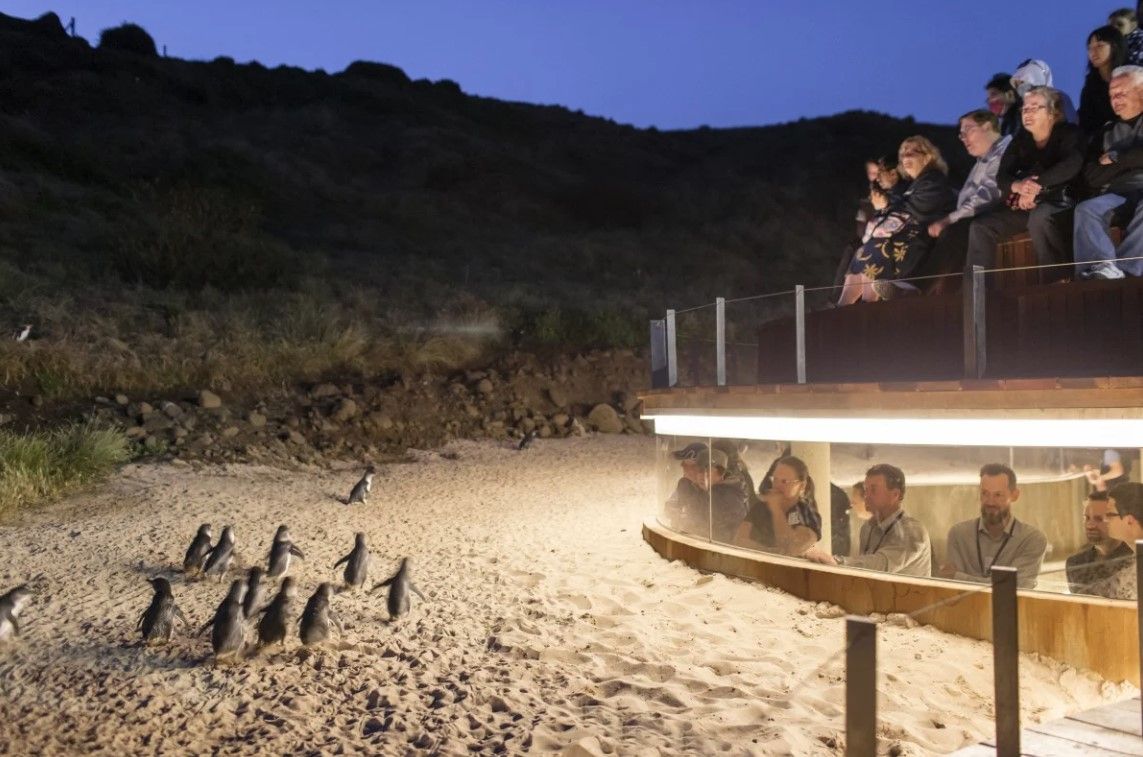An inside look at Australia’s nightly penguin parade
Phillip Island actually has the world’s largest colony of “little penguins.”

A few minutes every morning is all you need.
Stay up to date on the world's Headlines and Human Stories. It's fun, it's factual, it's fluff-free.
You may not know this, but penguins don’t only live in Antarctica. They’re also found in parts of South America, Africa and also Oceania. So, no, you don’t have to travel to the Antarctic to see these cute flightless birds. In fact, you can see them in their natural habitat on Phillip Island, Australia. Phillip Island is off the coast of Victoria, at the country’s southernmost tip.
Phillip Island actually has the world’s largest colony of “little penguins.” Little penguins are the smallest of all 18 penguin species in the world. This colony is known for its nightly “penguin parade,” which draws a lot of tourists.
Every night, around sunset, the penguins come onto the shore from the ocean, waddling over to their on-land homes. All of this happens in a Phillip Island Nature Park, and the rangers count the penguins as they complete their parade. It’s attended by over 700,000 people a year.
"Before coming to land, little penguins gather offshore in groups called ‘rafts,’” one group’s guide and ranger explains to National Geographic. “They wait for dusk to hide from predators such as pacific gulls and sea eagles; you're about to watch them waddle across the shore in groups, following familiar tracks back to their beachside burrows." They spend most of their lives in the ocean but make their way to the beach dunes to care for their burrows, breed and raise their young and molt their feathers.
This penguin parade was once at risk when nine of the 10 colonies on the island had been wiped out by the 1980s. It was predicted at the time that the parade would completely vanish by 2000. But, the state government introduced the Penguin Protection Programme in 1985, buying back homes that were too close to the burrows, removing power lines and restoring natural habitat. It also got rid of foxes that were threatening the population. Now, tourists are welcome to see the penguin parade – but photography is banned.
Don’t worry; the penguins are protected from onlookers. Ticket sales help support Phillip Island Nature Parks as it conducts research, offers education and works on conservation projects. Last year, Australian Premier Daniel Andrews and Member for Bass Jordan Crugnale announced a AU$5 million upgrade to the area to promote penguin protection. The project will install accessible boardwalks to viewing stands and put in more seating. This move will make the viewing experience better, and it’ll also help protect the environment and the penguins by limiting erosion from visitors walking around. A new sky box will also be constructed, giving visitors a high view over the beach to see the Penguin Parade. Work on these efforts should be finished in June 2024.
“Phillip Island is one of Victoria’s favorite tourist destinations, and these new upgrades will keep the region thriving for years to come,” said Andrews.




Comments ()